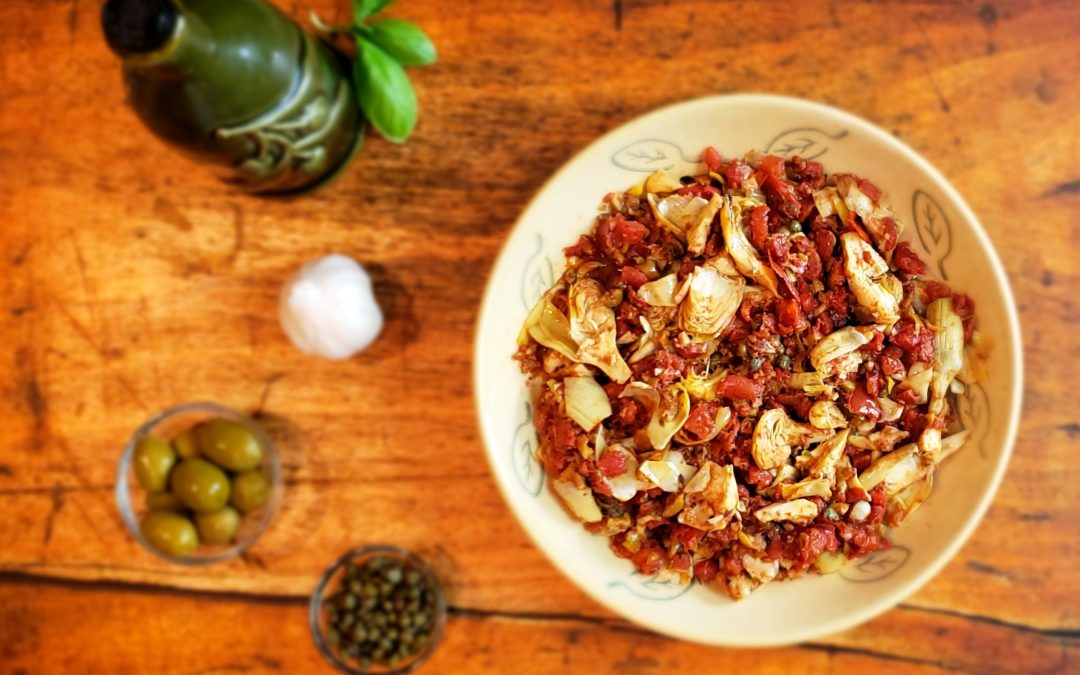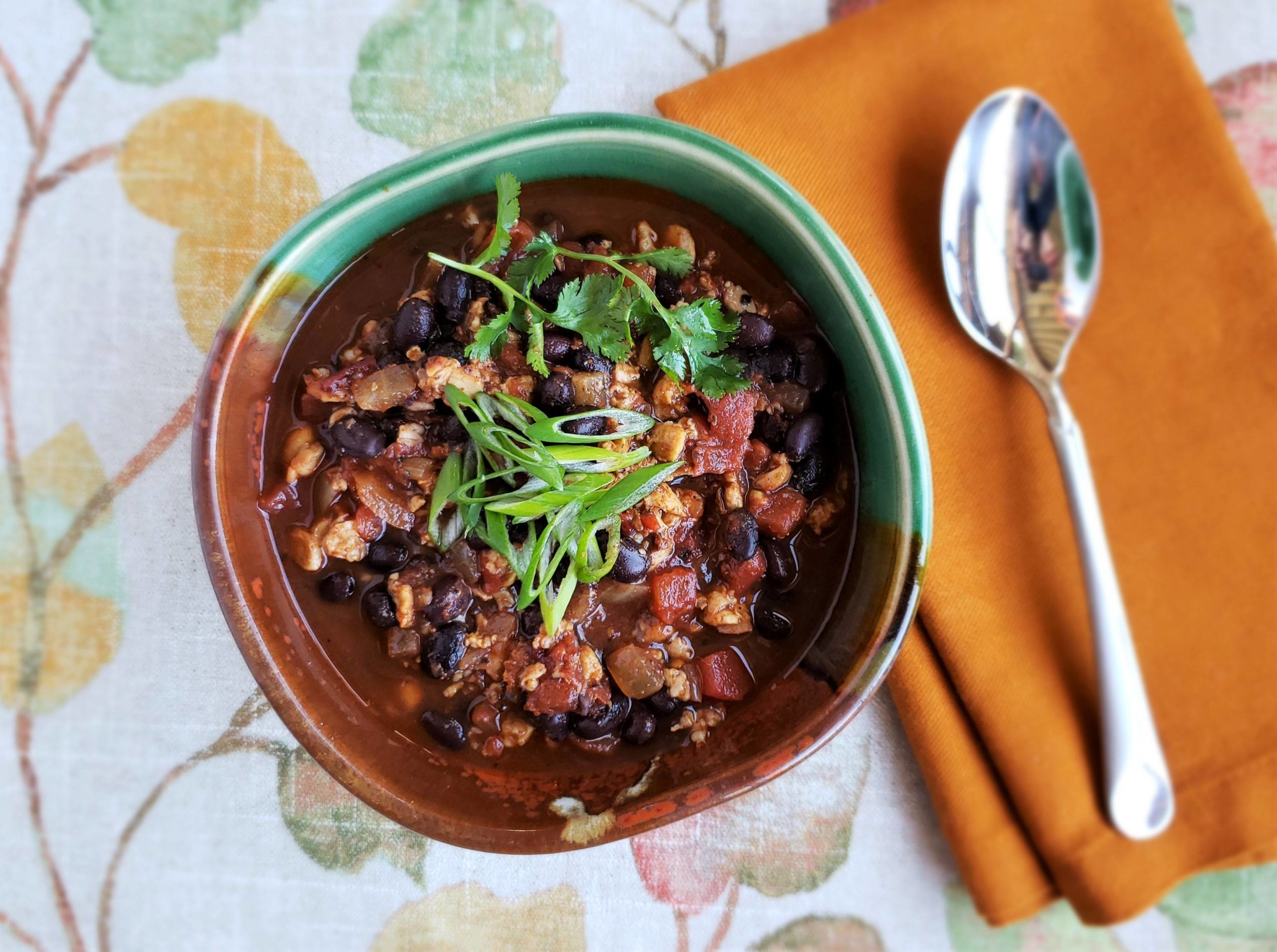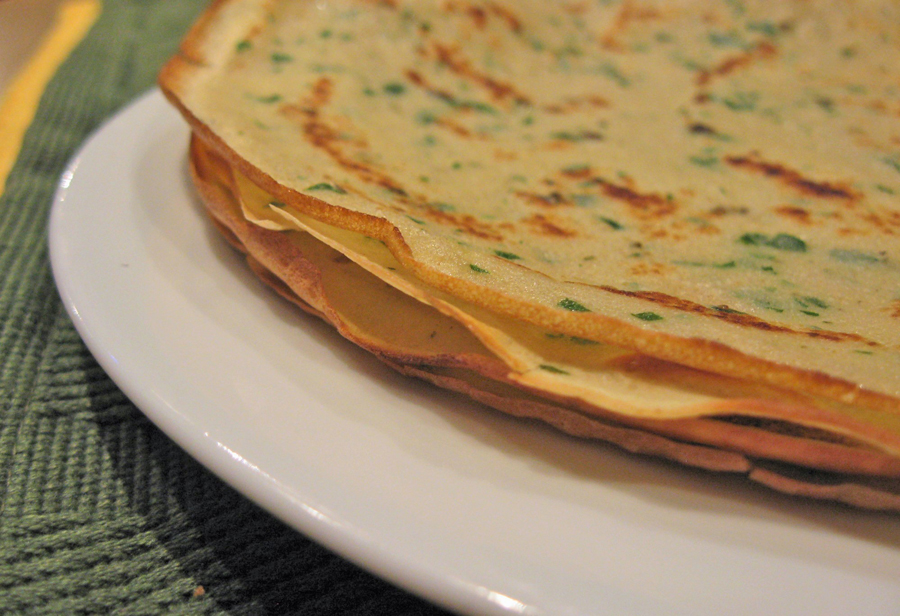Serves 6 as a complete meal with the pasta option A delicious mix of tangy, spicy and savory ingredients makes Puttanesca sauce (sugo alla puttanesca) a meal-time habit that can be made from your pantry. This popular Italian sauce commonly pairs with pasta but...

Roasted Cauliflower Steaks with Sumac
Roasted Cauliflower Steaks with Sumac

Roasted Cauliflower Steaks with Sumac
Pan-seared cauliflower steaks work great, yet often require finishing in the oven. This cauliflower steak with sumac option shortcuts the pan-searing for a longer, but less fussy, roast in the oven.
While these “C-steaks” may not satisfy a meat eater as a substitute, they will satisfy their appetite and offer meaty texture characteristics. The main stem of these veggie steaks offers a satisfying dense texture that contrasts with the crunchy outer florets and buttery softness of the smaller stems. So whether your diet is veg only or omni, cauliflower steaks can satisfy as a side or as a main dish when paired with complementary foods (see serving notes below).
Sumac is from dried and ground sumac berries. It’s a unique flavor, but you can use a combination of lemon juice and zest to mimic sumac’s lemon notes (see taste notes below) or use any seasoning or spice mix you prefer. Think about balancing cauliflowers sweet notes with something that offers a hint of sour and/or spicy heat.

Roasted Cauliflower Steaks with Sumac
Ingredients
- 1 large cauliflower (2½-3 pounds)
- 2 tablespoons extra virgin olive oil
- Few pinches of fine sea salt (about ⅛ teaspoon)
- 1 teaspoon ground sumac (optional but adds a soft tart or lemon flavor note)
- A pinch of cayenne (about ¼ of an ⅛ teaspoon)
Steps:
- Preheat the oven to 425°F and arrange a rack to be on the lowest level.
- Pull off the outer leaves of the cauliflower but do not cut out the core of the cauliflower. Trim the stem a bit if this helps stabilize the base of the cauliflower flat against a cutting board.
- With a chef’s knife, slice the cauliflower from top to base in one nice cut (avoid see-sawing the blade back and forth to keep florets from breaking off the stems). Depending on the size of the head, you may be able to cut 3-4 steaks sized at ¾ inch-thick “steaks” from the main stem and larger branches. As you cut, some florets will fall off which you can also roast or keep for another use.
- Place the cauliflower on the baking sheet, drizzle both sides or each steak with the olive oil and then season with salt. If you prefer to use less oil, brush oil onto steaks with a pastry brush.
- Place the baking sheet on the bottom rack and cook until cauliflower is browned (about 12 minutes).
- Remove from the oven and, with a spatula, gently turn the steaks over. Sprinkle the sumac onto the steaks—the side facing up.
- Place back on the bottom rack to finish cooking (about 10-12 minutes) or until browned on both sides and stems feel tender—the thicker branches should yield to a knife when pierced.
- Serve warm or room temperature.
Roasted Cauliflower Steaks with Sumac
- Cauliflower is a high satiety food with good fiber content, high protein content and low calorie values (107 calories for 4 cups chopped).
- Glucosinolates and isothiocyanates phytochemicals and antioxidants found in cauliflower may be beneficial for inflammation-related health problems and play a role in its particular aroma and flavor.
- Sumac adds bright red-purple colors and subtle hints of lemon or tang. It’s a great spice option for many dishes when lemons aren’t available or lemon juice isn’t the best form for delivering this taste and flavor element. Plus, lemons can add bitter notes.
- Serve as a base for cooked grains or seeds such as quinoa
- Top the steaks with a warm cannellini bean salad
- Serve with salmon, chicken or fish
- Serve without the sumac and instead a sauce like garlic walnut and herb sauce

“Cauliflower is nothing but Cabbage with a College Education”

Artichoke Puttanesca–Forget its Saucy Reputation

The Sweet and Meaty Taste Science of Grilled Vegetables
“Let’s grill tonight” translates to “let’s eat meat tonight” in many backyard BBQs. It’s not surprising since grilled meat products create hundreds of complex aroma and flavor compounds. Grilled vegetables create less of these craveable compounds but develop delicious...

Chipotle and Black Bean Tempeh Chili
Making chili should be an easy, homemade treat, but chili competitions and throwdowns can make it feel like it should be Instagram-ble or complex. Typically meat is central to chili, yet this tempeh chili is a contest contender for a comforting, satisfying homecooked...

Michele Redmond
French-trained Chef, Registered Dietitian Nutritionist & Food Enjoyment Activist
It's about Making Food First
Get Eat Well Academy periodic updates on easy ways to choose and cook foods that satisfy your appetite, nurture your body and make eating well a pleasure.



 The pleasure of food, good health and well-being through simple habits for eating well and flexitarian low-key cooking.
The pleasure of food, good health and well-being through simple habits for eating well and flexitarian low-key cooking. 






